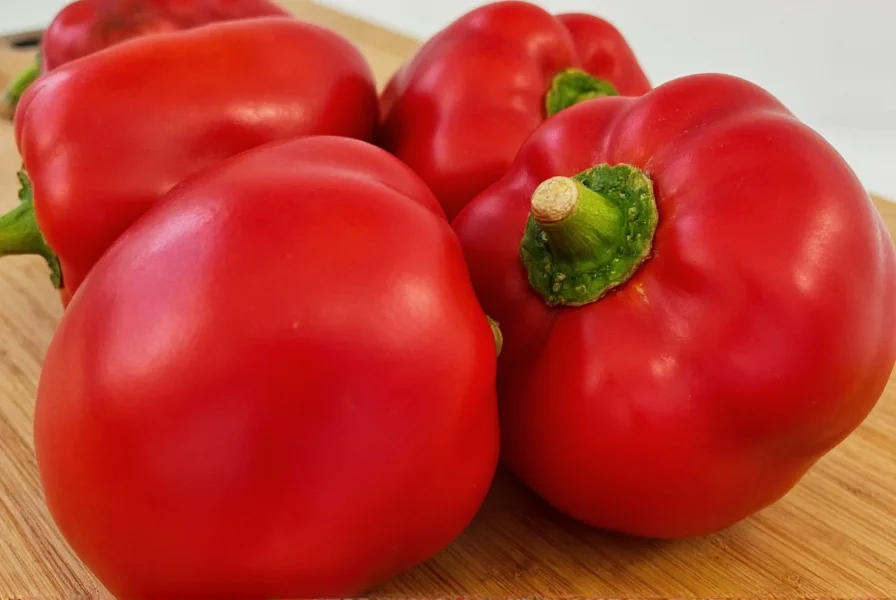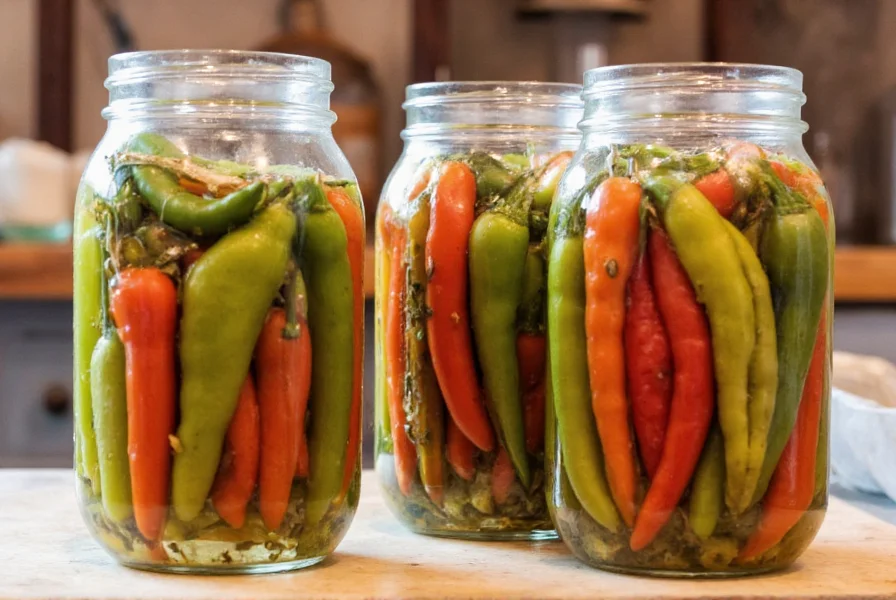Native to the Andean regions of South America, manzano peppers (Capsicum pubescens) represent one of the five domesticated chili species. Unlike most commercial peppers, they thrive in cooler mountain climates and feature black seeds—a distinctive characteristic that sets them apart from other Capsicum varieties. The name "manzano" translates to "apple" in Spanish, referencing both their rounded shape and crisp, juicy texture that resembles an apple when bitten.
Physical Characteristics and Varieties
Manzano peppers typically measure 1.5-2.5 inches in diameter with a rounded, slightly flattened appearance. They mature from green to vibrant colors including red, yellow, orange, and even purple. The thick, crisp walls contain the signature black seeds, and the flesh maintains a substantial texture even when cooked. Two notable varieties include:
| Variety | Color | Heat Level (SHU) | Flavor Profile |
|---|---|---|---|
| Rocoto Rojo | Bright red | 12,000-30,000 | Fruity with berry notes, moderate heat |
| Manzano Amarillo | Golden yellow | 15,000-25,000 | Citrus-forward, slightly sweeter |
Heat Level and Flavor Profile
Understanding manzano pepper heat requires context—they register between 12,000-30,000 Scoville Heat Units (SHU), placing them in the medium range comparable to cayenne pepper but milder than habaneros. What makes manzano peppers special is their complex flavor profile that balances heat with distinct fruitiness. The initial taste reveals bright citrus notes followed by subtle berry undertones and earthy warmth. This nuanced flavor makes them particularly valuable in culinary applications where heat shouldn't overwhelm other ingredients.
When comparing manzano pepper vs ají dulce, the key difference lies in heat presence. While manzano delivers noticeable warmth, ají dulce remains completely non-spicy despite similar appearance. Both peppers share the characteristic black seeds of Capsicum pubescens, but only manzano provides the signature heat that defines its culinary role.
Culinary Applications
Chefs prize manzano peppers for their ability to enhance dishes without dominating them. Traditional Peruvian preparations include:
- Sal sauces: Blended with cilantro, garlic, and oil for dipping sauces
- Stews and soups: Added to locro (Andean potato stew) for depth
- Preserves: Cooked with sugar for sweet-heat preserves
- Salsas: Combined with tomatoes and onions for fresh table salsas
When working with fresh manzano peppers, remove seeds and membranes to control heat levels. Their thick walls hold up well to roasting, which enhances their natural sweetness. For those seeking manzano pepper substitute options, a combination of serrano peppers (for heat) and bell peppers (for texture) can approximate the experience, though the distinctive fruitiness remains difficult to replicate.

Growing Manzano Peppers
Gardeners outside South America face challenges growing authentic manzano peppers due to their specific climate requirements. These peppers prefer cooler temperatures (60-75°F) and higher altitudes, making them suitable for mountainous regions but challenging for tropical or extremely hot climates. They require 90-120 days to mature from seed and benefit from consistent moisture without waterlogging.
Unlike most chili varieties, manzano peppers can self-pollinate effectively, making them suitable for container gardening. Their distinctive black seeds germinate best when kept at 70-80°F. When cultivating manzano peppers, expect plants to reach 3-5 feet in height with distinctive hairy leaves—a characteristic of the pubescens species.
Nutritional Benefits
Manzano peppers deliver significant nutritional value beyond their culinary appeal. A single pepper provides:
- Over 100% of the daily recommended vitamin C intake
- Substantial vitamin A and B6
- Dietary fiber for digestive health
- Antioxidants including capsaicin and carotenoids
Research suggests regular consumption of chili peppers like manzano may support metabolic health and provide anti-inflammatory benefits. The capsaicin content, while moderate compared to hotter varieties, still offers potential metabolism-boosting properties.
Storage and Preservation
Due to their thick walls and dense flesh, manzano peppers maintain freshness longer than many chili varieties. Store unwashed peppers in the crisper drawer of your refrigerator for up to three weeks. For longer preservation:
- Freezing: Roast and freeze whole peppers for up to 6 months
- Pickling: Preserve in vinegar brine for 6-12 months
- Drying: Dehydrate for powder or rehydration in cooking

Common Questions About Manzano Peppers
Understanding these distinctive peppers often raises specific questions about their use and characteristics. Here's what culinary enthusiasts frequently ask when exploring manzano pepper recipes and applications.
What does manzano pepper taste like?
Manzano peppers offer a complex flavor profile with initial citrus notes followed by subtle berry undertones and earthy warmth. They provide medium heat (12,000-30,000 Scoville units) balanced by distinctive fruitiness that sets them apart from other chili varieties. The thick, crisp flesh has a texture reminiscent of apples, which inspired their Spanish name.
How hot is a manzano pepper compared to other chilies?
Manzano peppers range from 12,000-30,000 Scoville Heat Units, placing them in the medium heat category. They're significantly milder than habaneros (100,000-350,000 SHU) but hotter than jalapeños (2,500-8,000 SHU). Their heat is more comparable to cayenne peppers, though manzanos offer more complex fruit flavors that balance the spiciness.
Can I substitute manzano peppers in recipes?
Yes, though finding an exact substitute proves challenging due to manzano's unique flavor profile. For heat and texture, combine serrano peppers with bell peppers. For Peruvian dishes specifically, rocoto peppers make the closest substitute. When manzano peppers aren't available, ají amarillo paste can provide similar fruity notes with adjusted heat levels.
Why do manzano peppers have black seeds?
Manzano peppers belong to the Capsicum pubescens species, the only domesticated pepper variety with black seeds. This distinctive feature helps identify authentic manzano peppers versus look-alikes. The black seeds develop as the pepper matures and remain dark even when the fruit changes color from green to red, yellow, or orange.
Where can I buy manzano peppers?
Manzano peppers remain specialty items outside their native Andean regions. Check Latin American grocery stores, particularly those specializing in Peruvian or Ecuadorian products. Farmers markets in regions with significant South American communities sometimes carry them. Online specialty produce retailers may offer seasonal availability, and gardening suppliers sell seeds for home cultivation in suitable climates.











 浙公网安备
33010002000092号
浙公网安备
33010002000092号 浙B2-20120091-4
浙B2-20120091-4